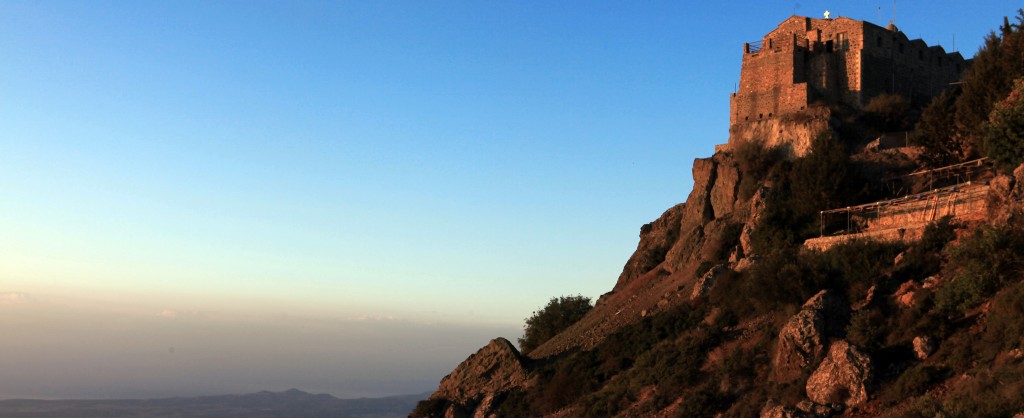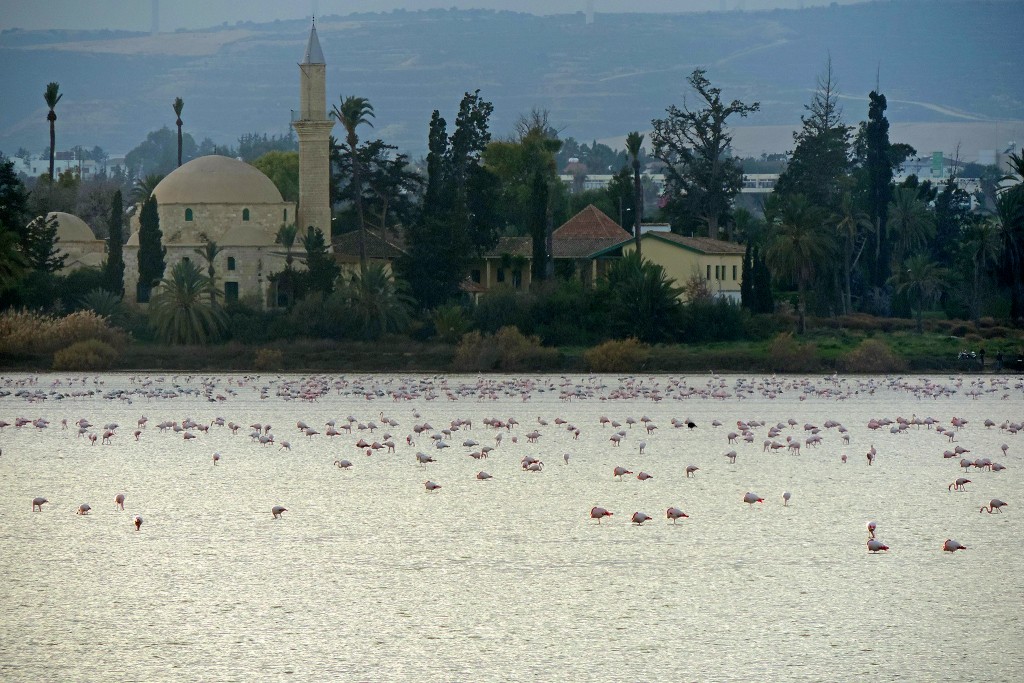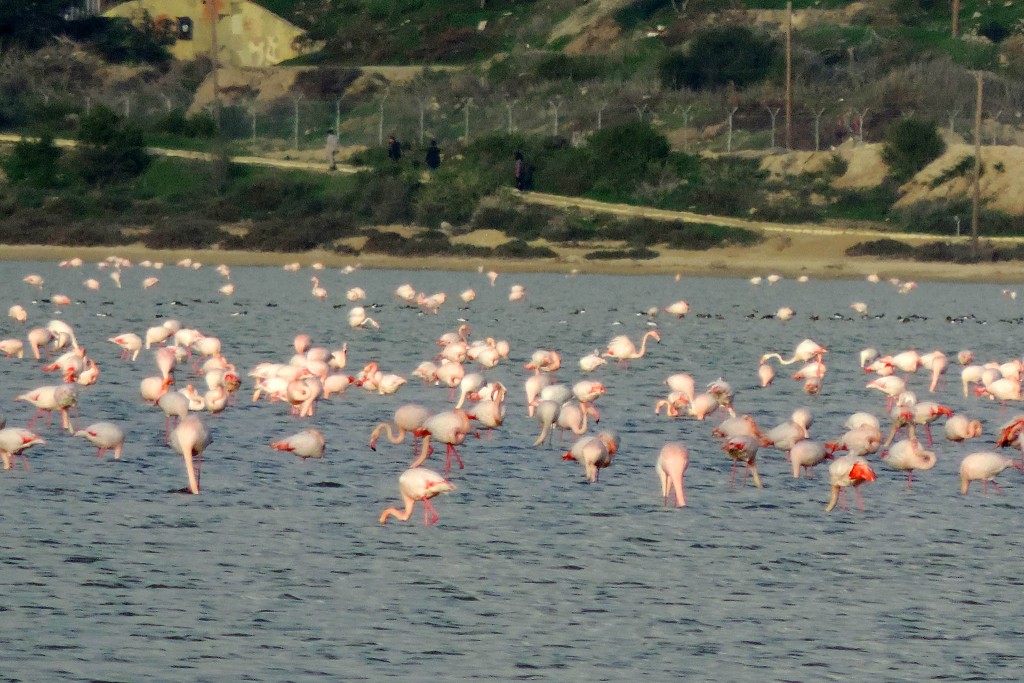Мany people bypass the outskirts of Lаrnaca, although this route offers many treasures.
Some people ask, “Which sights should we visit when having a holiday in Аyia-Napa and Protaras?” The route we will take today is close to these popular resorts of Cyprus.
Flamingoes in Cyprus
The first place we will stop at will be the Saline Marshes of Larnaca, located close to the airport. This is the first sight which guests arriving on the island will see.
A modern road linking Larnaca and Кiti splits the lake into two. Of course, in the summer it is not as interesting, but in the winter migrating bird come here, including the famous pink flamingoes, which became the business card of Cyprus.
The graceful bird is an additional decoration to the wonderful landscape, but in the summer the picture completely changes – water evaporates and you can see only a thick layer of salt, which covers the bottom of the lake.
The Salt Lake of Larnaca
Local lеgend says that very many vineyards grew here. Saint Lazarus once arrived in Cyprus and tied his boat nearby. On his way to the city he felt thirsty and asked an elderly woman for a handful of grapes. She rejected the request.
Saint Lazarus was hurt and cursed the place – green vineyards became dry and gave way to snow-white salt.
Hala Sultan Tekke mosque
It is devoted to Hala Sultan or Umm Haram, an aunt of the Prophet Muhammed, who died after falling off a mule during the Arab raids of 649.
The mosque is hidden amongst tall palms and other trees, and is considered to be the third of the sacred shrines for Muslims after Mecca and Medina.
After casting one more glance over the cosmic landscape of the salt lake, with the mosque towering over it, continue your way towards Кiti.
Кiti
The highlight of the village, located on a plain, is the church of Holy Mother Аngeloktisti, which is devoted to The Virgin Mary. It derives its name from a legend which says that it was built in one night by angels.
The Byzantium church, dating back to the 11th century, was built on the ruins of an early Christian throne church, from which only an arc with the famous mosaics remain.
These mosaics reproduce a full length image of The Holy Mother Odigitria. The Blessed Virgin holds Jesus Christ in her left hand. On both sides of the Holy Mother, Archangels Gabriel and Michael stand, whose wings resemble the wings of peacocks.
The composition has a golden background and is made of small glass chips framed into plate glass, and is surrounded by an ornamental frame with the images of birds, animals and plants. You can read an inscription on it ‘Holy Mary.’ The mosaics date back to the 5th – 6th centuries, and they are considered equal to the mosaics of Ravenna by their beauty and value.
A little further there is a Frankish chapel of the 14th century, which used to belong to the Zimbele family, with the family arms located above the entrance. Now there is a small Byzantium museum here.
On the northern part of the church towers a Byzantium chapel dating back to the 13th century, and having the names of Saint Cosmas and Saint Damian.
To the east of the church there is a century-old 14 m high tree, which is considered to be one of the oldest on the island.
Stavrovouni
According to legend the convent was built by Saint Yelena, who stayed in Cyprus to shelter from a storm at sea which caught her when she was returning from a journey to holy places. At night Yelena dreamt about an angel who told her that a church, where she must leave part of the Holy Cross, must be built on the island on God’s wishes.
Upon awakening Saint Yelena demanded that the Holy Cross be presented to her but it had disappeared. She looked around and saw light on top of the nearest mountain and Yelena sent her people to find the cause of this light. It was there that the Cross Emitting Light was found. Saint Yelena decided that it was here that the church should be built.
Yelena built the church on the Stavrovouni Mountain, not far from the village of Тоchni where later she founded a monastery and where she left part of the Holy Cross, the cross of the good thief and a blessed nail. The nail was lost in 1426 when Egyptian strategist, Tangriverdis, destroyed the church of the monastery.
There is no mention of the cross of the good thief after the times of the Turkish rule. Now the monastery only keeps part of the Holy Cross, framed into the centre of a silver cross of the church.
The Stavrovouni monastery is located on a rocky summit, at a height of 750 m above sea level. There is a wonderful view of the city and Larnaca bay.
According to the rules of canons, which the monks strictly adhere to, women are not allowed into the monastery, but each year on the 14th of September, on the day when the opening of the monastery is celebrated, an interesting ritual is performed here followed by a festival.
At the foot of the Stavrovouni monastery, there is the monastery of Saint Barnabas. Monks of the monastery are famous island-wide for their icon painting.
Another enthralling journey is coming to an end, but our trips around Cyprus will not be over soon as each corner of this small island holds so many treasures and secrets for everyone to discover!


